
Excavation, analysis and fried rice Enter the world of archaeologists!
This article is open to the public. Please donate to support the children in the Myanmarese refugee children's centre.
(Interviewed July 2019)
This is the 10th interview article of TANQ-JOB writer Midori Watabe!
Are you fascinated by fossils, the tableware used hundreds of years ago, and things that came out from under the soil?
But I think only some people are interested in treasure hunting, fossil excavation, etc. (the occupation of childhood dreams)
The vast majority would think that it will not be useful in the future.
However!
Those who have studied archaeology are active in many places.
Even if you are interested in archaeology, it may not be clear how you want to work. 'Can you live as an archaeologist in the first place?'
In this article, we interviewed Professor Hideo Yoshii, Professor, Graduate School of Letters, Kyoto University.
Watabe: I might be able to meet a professor of Dinosaurs!
QUIZ
What do you think archeologists do?
Watabe: Don't they analyse fossils of living things such as dinosaurs, mammoths, and Anomalocaris?
Introducing Dr Hideo Yoshii
I am a professor at the Kyoto University Graduate School of Letters!
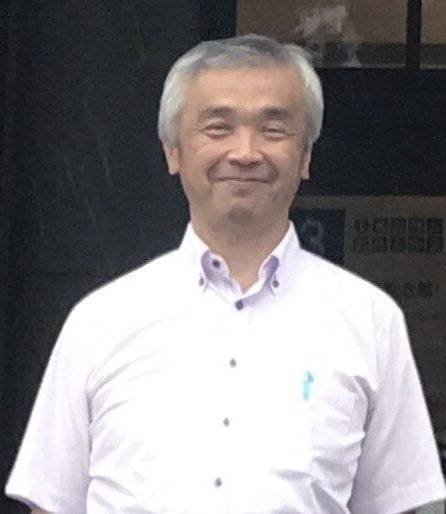
"I will explain to you what archaeology is and what archaeologists do!"
First, What is Archaeology?
Archaeology is the study of the human past.
We look at what we dug from under the ground to find out about the past.
Archaeology is often thought of as the analysis of famous dinosaurs, ammonites, and trilobites, but it's not. We analyze the human past. Palaeontology is the study that analyzes the generations of organisms before the appearance of homo sapiens.
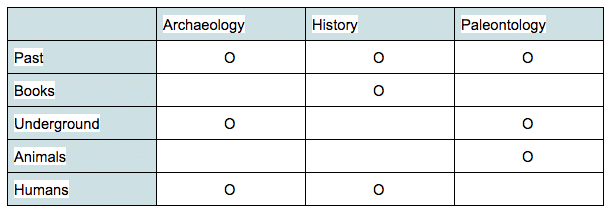
What is the difference between Archaeology and History?
Archaeology and history are very similar. Both examine the human past, but historians analyze the history by reading the found books (letters). But Archaeologists analyze the past from excavations.
For example, a Japanese historian might read the Kojiki and the Nihonshoki and analyze the period, but we analyze the "objects" excavated from archaeological sites.
What do archaeologists do?
If there is no written record, or if there is no reliable record in the book, we will analyze the "objects" excavated. However, since "objects" do not speak, we guess from shape and location. One of the archaeology inside jokes is, "Only if objects could talk .... then our jobs would be much easier!"
Archaeologists work with experts in various fields.
For example, if you find a ruin, you tell an expert in ancient architecture and work together to investigate.
If you do not notice that you just found a ruin, it will be destroyed. But jackpots are hard to find. (Lol)
Excavated materials are very brittle and may break. And it breaks sometimes. In that case, we fix it carefully using glue in the laboratory.
Investigation of excavations is very difficult. It takes time to figure out what the excavated objects are and how it was used.
The process is tedious, however, I am happy to be able to do my favourite research, and I work with a sense of responsibility to continue my discovery as an archaeologist.
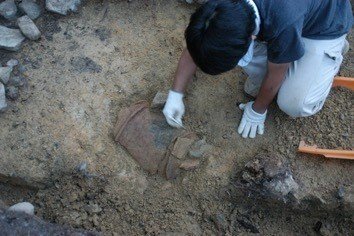
Carefully digging a Haniwa
(Osaka Prefecture Shikinzan Burial Mound, 2003)
An archaeologist's job is like mixing three sets of 100-piece jigsaw puzzles, discarding two-thirds of them, putting the rest in a bag, shaking them, and making 3 separate photographs of the puzzle.
Watabe: Impossible... my brain will explode...
What do you usually do?
My speciality is Korean archaeology, an archaeologist specializing in Korean history.
I am currently studying the Baekje era, especially the tombs of the Three Kingdoms period in Korea. We investigate a tomb found in a former Baekje area in Korea. The burial mounds found in Korea is a tomb with a maximum diameter of about 60 meters. However, in Japan, there are massive rear burial mounds, the largest of them has a total length of 486 meters as the Daisen Kofun (Nintoku Tomb). Working with Japanese history experts, we are also investigating why such large burial mounds were needed for ancient Japanese kings.
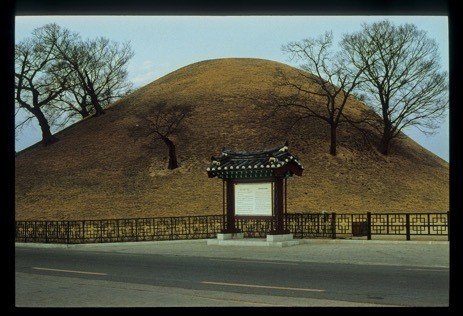
Shilla kingdom tomb in Gyeongju

Baekje Burial Mounds in Buyeo (Lingshan Village Burial Mounds)
I usually read and examine books about what Korean archaeologists have researched. Either I translate articles on Korean archaeology written in Japanese, then publish them in Korean. Also, I guide university students and students in the laboratory to develop people who can play an active part in the future.
Furthermore, I use my knowledge of excavation to cooperate in excavations in Kyoto city. Because Heiankyo was in Kyoto, all the buildings under the city are archaeological sites. When a company builds a hotel or building, it must apply to Kyoto city, excavate construction, in case of a discovery. Especially in the area of Kyoto University, archaeological sites of various eras remain.
Baekje (the country that was in the Republic of Korea) and Japan have been closely related since ancient times, and many people have migrated to Japan from Baekje.
According to the Japanese records, the birth mother of Emperor Hanmu, Takano Shinagasa was a descendant of a foreigner from Baekje, who was descended from King Bunei of Baekje. It is said that Buddhism was first introduced from Baekje, and the famous analects were first introduced to Japan by a visitor from Baekje.
As a result, archaeological objects similar to those found in Korea are sometimes found in Japan.
Watabe:
A friend from Korea at school (in Malaysia) taught me a few Korean words that I can use in my daily life, and I realised that there are words that have the same pronunciation and the same meaning in Japanese and Korean it was very surprising. The terms "bag" and "monpe" are pronounced as "bag" and "monpe" in both Japanese and Korean, and have the same meaning. My friend's mother also said she learned kanji at school and was surprised to learn that kanji has been used in Japan and Korea for thousands of years!
Does the "historians cannot live without coffee" theory applies to archaeologists as well?
The Coffee story
A historian told me this theory when I interviewed him.
Click here for the coffe story
I drink coffee, but not as much that I can't live without it (laughs). Historians will drink a lot of coffee to read books and texts. However, in the case of archaeologists, I think it is "alcohol." When I told my senior that I wanted to be an archaeologist at college, I was asked, "Can I drink alcohol?" (But I'm weak to alcohol, so I can't drink much, but I thought that this was required to be an archaeologist and said, "Yes, I can.") In the old days, after having joined the excavation work outside at noon, everyone drank together at night. It was work during the day, drink at night, and eating delicious food together.
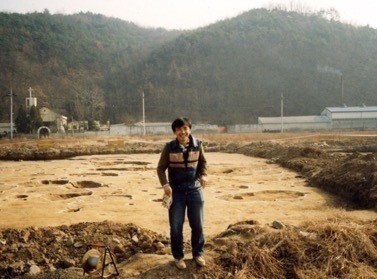
At the excavation site at the Urushidani residential area in Daegu when studying in Korea (1992)
what kind of skills do you need to be an archaeologist?
First of all, being able to get up early and have physical strength. Excavations are performed in various climates, so it is hard to do without physical strength. It may be extremely cold, or under the scorching sun, and when excavation is over, you usually feel sick. (If you wear a helmet, it's hotter.) Also, to cooperate and excavate, you must be punctual and be able to eat anything, and (if possible) drink alcohol. I also often work with archaeologists from other countries, so it would be nice to speak the language of that country. I need English and Korean because I sometimes work with Korean experts. Finally, you need to work hard. It takes tremendous effort, patience and commitment to make a picture of an infinite jigsaw puzzle.
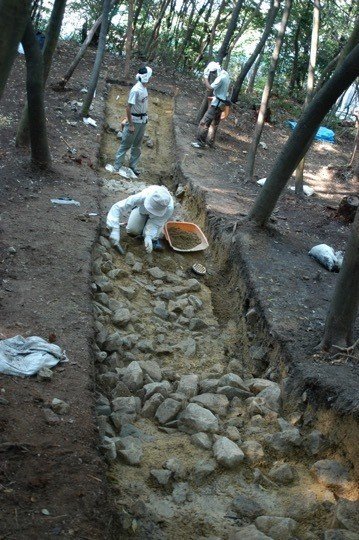
Excavation is a steady cooperative work (Okinawa Shikinzan Tomb, 2003)
What if you want to be an archaeologist as a child and can you join the scene?
When I was a high school student, a high school teacher took me to the excavation during summer vacation. The teacher was the leader, and the students were sometimes involved as excavators. We washed, arranged, and investigated what was excavated after school.
It is difficult to participate in excavation work as a high school student because of the risk of injury or accidents these days. Now, you can only get involved in the field after becoming a college student.
Until then, you can go to municipal museums, participate in excavation briefings if you find any archaeological site in the area, or participate in events held during the summer vacation.
Watabe: Information on excavation camps, lectures, etc. will be available if you enter "elementary, junior high and high school students, archeology, and excavation" on the Internet! If you are interested, please take a look with your parents!
If you want to be an archaeologist in the future
If you are interested, please try it. I want to work with people who can continue studying steadily even if they encounter a problem.
I think archaeology is a job that you can focus on your interests.
I think it is important to continue my projects while nurturing the next talent.
Are there any funny inside jokes among archaeologists?
When I was a student, when I ate fried rice and Tianjin rice at a restaurant, I used to think of it as a burial mound and excavate (eat) it. The other customers gave us funny looks when we inserted the spoon carefully while analyzing the contents and shape of the burial mound.
(When we went to a Yakitori restaurant, some senior arrowhead researchers used to classify skewers by type, arguing which skewer resembled which kind of arrowhead of any age.)
QUIZ
How do archaeologists excavate a burial mound?
Which do you think is # 1 or # 2?
(The numbers are the order to dig)
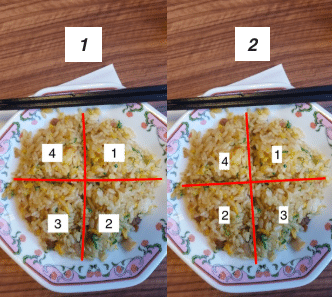
After I finished writing the article, I went to eat fried rice and tried fried rice excavation! (The above is the image)
When you eat fried rice and Tianjin rice next time, please try to discover the art of fried rice excavation!
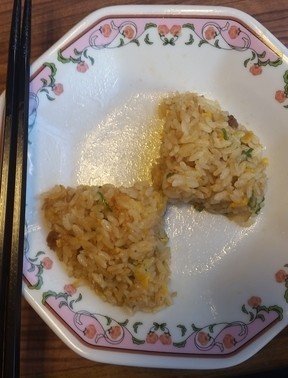
(Answer: In archaeology, you excavate diagonally, so the correct answer is the first one!)
Where do you work once you learn archaeology?
There aren't many archaeologists at universities (university professors like me). Many people work in museums, become high school teachers, or in prefectural and municipal governments, there are many people involved in the protection of cultural properties and archaeological excavations, their research, and regional development. Such people hold events for elementary, middle and high school students.
How many people do you think works in an archaeological department of a municipality in Japan?
Don't scroll down until you think you know the answer!!
(Answer: 5-6000 people)
Dr Yoshii's motto
The most important thing is to spread interest. It has been almost 20 years since I entered Kyoto University in 2000. I always keep my antenna on to learn more than I have now and continue to make discoveries.
More info about Dr Yoshii
Click here for the homepage of Kyoto University Graduate School of Letters and Faculty of Letters
Click here for the homepage of Kyoto University Graduate School of Letters and Faculty of Letters, Department of Archeology of History and Literature
Click here for Dr Yoshii's homepage
Click here for the website of a book summarizing the relationship between Baekje and Japan (Partially authored by Prof. Yoshii)
(the above websites are in Japanese)
What I learned
Before hearing the story, if I wanted to study archaeology and get a job, I thought I had to be a researcher or a school teacher. However, I was surprised to find out that you could do various jobs using knowledge of archaeology! Dr Yoshii said, "I care about spreading my interest." (I look at myself every day and improve my skills as a writer!

He also taught me about the history of Kyoto University!
Left: Dr Yoshii Right: Midori Watabe (Author)
ここから先は
¥ 500
この記事が気に入ったらチップで応援してみませんか?
